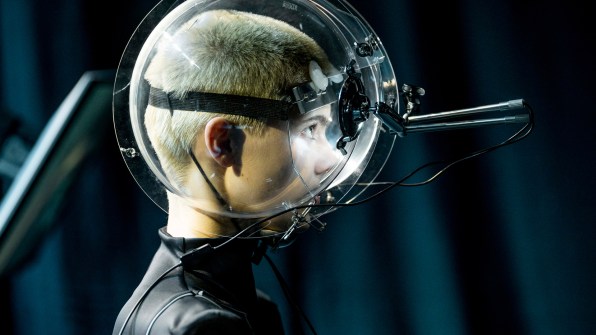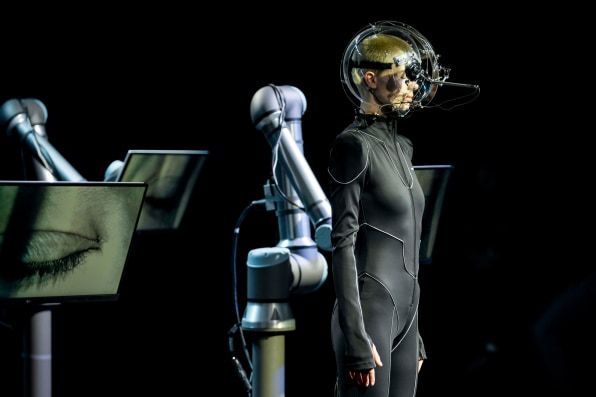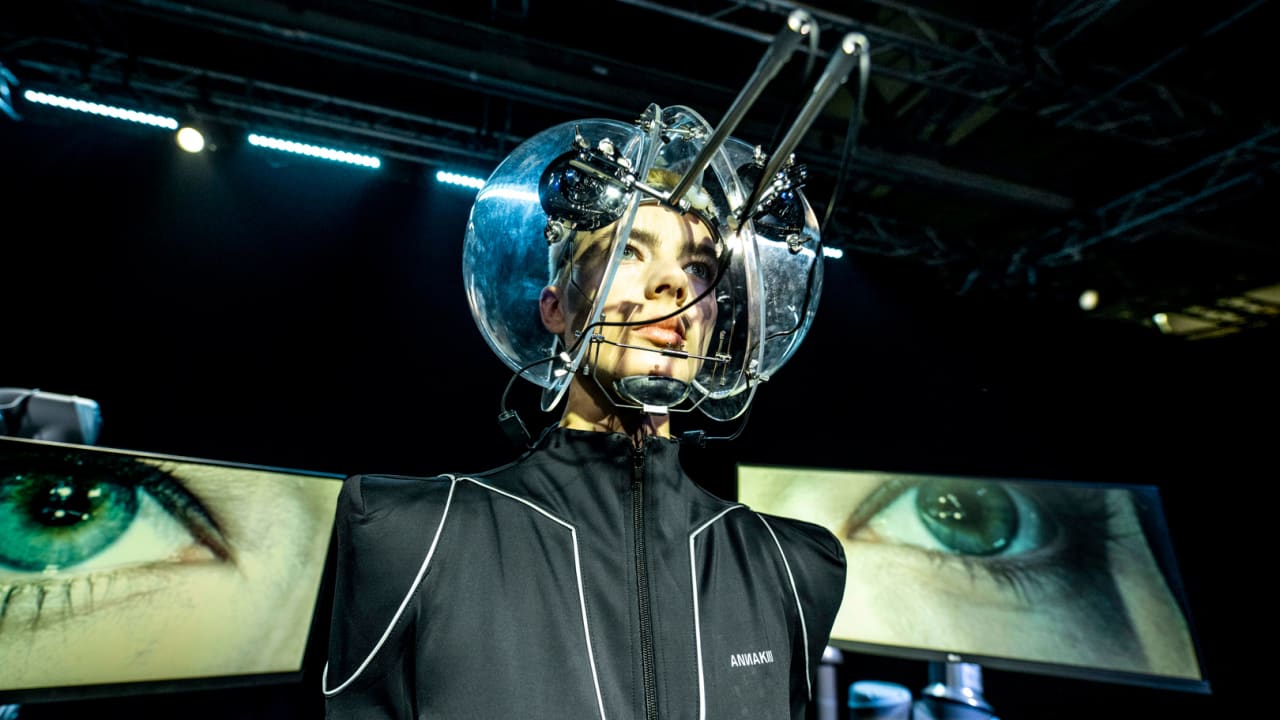The suit seems to be meant for exploring space, or maybe the deep ocean. From the neoprene sheen of the outfit to its bulbous fishbowl helmet, the entire garment seems designed to keep out malevolent environmental forces. But in fact, it is a reproach, intended for anyone looking inside. And its four imposing robotic arms are there to remind you.
This is Returning the Gaze, the latest project from Iranian-American artist Behnaz Farahi. Created at the invitation of fashion label ANNAKIKI for its cyborg-themed Milan show last month, Returning the Gaze uses two cameras to track its wearer’s eyes. Then those eyes appear oversized on four screens held by Universal Robots robotic appendages. The entire costume is designed so that a model looks back, powerfully, at her onlookers.
“The models are still walking on stage, with onlookers watching the models. The notion of gaze and fixation is so dominant in this process,” says Farahi. “I wanted this project to address and challenge the logic of a catwalk. “
In the past, Farahi designed a fur coat that bristles like a porcupine when looked at. She created a pair of niqābs that flash a secret language similar to Morse code to communicate with past prying eyes. Her work draws heavily on film theorist Laura Mulvey’s landmark essay, Visual pleasure and narrative cinema [pdf], which describes the impact of the male gaze. As Mulvey argues, the male gaze is not just an uncomfortable but fleeting sensation of being controlled against your will; it is an inescapable and ubiquitous point of view that has shaped our culture. Almost 50 years after this essay was written, we can see how, from fashion to architecture, this exploitative male perspective has largely shaped the world we live in. Because of this story, even when a woman looks at herself alone in the mirror, the male gaze can still hide like an invisible shadow.

“I’m really amazed by this notion of the gaze and by the work of Laura Mulvey,” says Farahi. But in recent years, she’s been drawn to another concept: surveillance feminism, or the idea that cameras and other tools often used to extract the male gaze could be augmented for female empowerment. “Surveillance usually has a bad connotation,” she says, “but how do you use surveillance as a feminist act? I’m super interested in that.

Now, don’t take Farahi’s criticism the wrong way. She doesn’t oversimplify men into a community of leering misfits or asserting that one should never look lustfully at another. She acknowledges that there are times when a gaze is invited – ranging from social media posts to runway shows – and always finds herself fascinated by the important role of gazes and eye contact in communication. These are not ideas she ignores when challenging the male gaze at a fashion show. Rather, she tries to draw attention to these concepts and inspire people to deconstruct their nuances.
“You already have this logic of the gaze, inviting it when you are a model parading on the catwalk. That said, we hear a lot of stories in the fashion world about how women constantly experience unwanted sexual attention backstage, during or after shows,” says Farahi. “[I] don’t necessarily want everyone to feel completely uncomfortable and not look, but to start having conversations about the notion of looking. Historically, people don’t know what they look like [at someone else]. Sometimes the look can be overwhelming, and sometimes it can be more inviting.

